For Anyone but not for Everyone – Democracy ∞ Negotiating
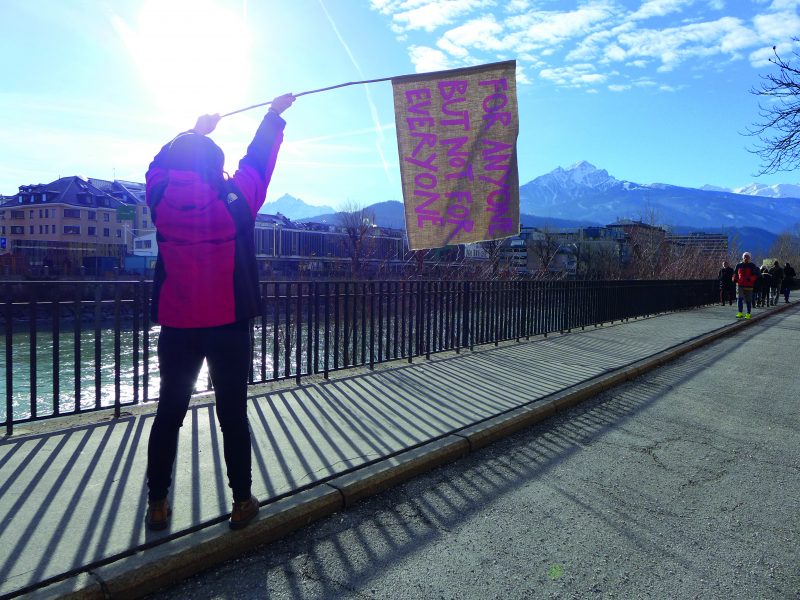
For Anyone but not for Everyone –
Democracy ∞ Negotiating
Christine Eder and Philipp Haupt (Verteidigung der Demokratie), Henrike Naumann, Csaba Nemes, Mario Pfeifer, Negin Rezaie, Johanna Tinzl*, Anna Witt
Curated by Ingeborg Erhart in cooperation with Maria Peters*
The idea of democracy is the idea of freedom as political self-determination. It is the deepest meaning of the democratic principle that the political subject wants freedom not only for itself but also for others. The I also wants freedom for the you, because it perceives the you as being the same. Thus the idea of equality must be added to freedom in order for a democratic society to come into being.[1]
For Anyone but not for Everyone is written in pink letters on the flag made of unbleached linen that flies in the front area of the Kunstpavillon. Johanna Tinzl’s flag, which is also at the center of the subject of the invitation card and the poster for the exhibition For Anyone but not for Everyone – Negotiating ∞ Democracy, which was shot in Innsbruck, conveys the question of the mechanisms of inclusion and exclusion in our society in a striking and simultaneously subtle, defiant and fragile way. Does for all really mean for everyone?
Uncertainty takes hold, changes in the communication climate lead to destabilization. Why are we battening down the hatches? Literally in erecting new borders, but also in our heads. Is globalization leading to a resurgence of local nationalisms, to “we are we”, or in Tyrolean (and also Bavarian) “mia sein mia”? Is it the losers of neoliberalism or strict market fundamentalism for whom the “social hammock” had become a disaster, who have now found another scapegoat? Or is it due to a lack of education and/or empathy? Political parties take advantage of this uncertainty, play the “strong man” and stir up rumbling fears of the loss of prosperity, homeland and tradition.
At a time when the Austrian Minister of the Interior is proclaiming that “the law is to follow politics – and not politics the law,” questions the European Convention on Human Rights and continually wants to restrict the freedom of the press, and when it is possible to mobilize the masses within 48 hours via social networks, the attitude that supports the exhibition project is one of dialogue and openness.
The multi-channel video installation On Fear and Education, Disenchantment and Justice, Protest and Disunion in Saxony/Germany by Mario Pfeifer is an example of this. Nine people from different backgrounds – the crèche teacher who fought for a better GDR in the New Forum, the Pegida[2] supporter, the trade unionist or the social studies teacher – are given time to speak. In contrast to abbreviated slogans and snappy tweets, people spend 546 minutes concentrating on explaining their political attitudes, how they arrived at them, and give their assessment of the social situation. Face to face, unabridged speech confronts agitation.
Presented on two bedside tables with old televisions, in her video installation Triangular Stories, a kind of “video diary” of a group of recalcitrant young people who compensate for their boredom between the couch and the disco, Henrike Naumann analyzes the social changes of the 1990s reunited Germany. High on drugs and the desire for sex, people can sometimes be seen with their right arms raised and there are shouts of Sieg Heil! The overburdened present and lack of perspective seduce them into a belief in a better past. Retro furniture acts as a trigger for the feeling of the 90s. In reality, nothing is happy at all and the breeding ground for right-wing extremism seems to be frighteningly thin. In 2012, Triangular Stories marked the beginning of an intense debate on the post-reunification period that Naumann is still pursuing today. In the film, in the face of a swastika formed out of pistols, it becomes too much for one of the young women. She screams, “Turn the camera off!”
Csaba Nemes’ works on paper, the Occupy Monument and Testimony of Democracy series, tell of constructive resistance and a form of communal activism. Freedom Square in the center of Budapest, close to the Parliament, is one of the most prestigious places of Hungary’s collective memory. In 2014, a monument to the victims of the German occupation was erected there. An eagle symbolizing Germany attacks “innocent” Hungary in the form of the Archangel Gabriel. A group of artists and (art) historians erected a “Living Monument,” a counter-monument, a place of dialogue and discussion – the white chairs symbolize this attitude – and people bring personal objects, photos and memories to commemorate the losses during the occupation. The Living Memorial (Hungarian: Eleven Emlékmű) has slowly evolved beyond protest against a historically inaccurate monument or one interpreted one-dimensionally. The defenders of freedom of expression still meet there today to discuss and take a stand against the repressive, nationalist and racist climate. Nemes’ works, which seem to have fallen out of time, honor the resistance of the activists and make it clear that they have come to stay.
COMRADE CONRADE,[3] Democracy and Peace on the Street was an interdisciplinary art, research and peace project in Graz that, in the commemorative year 2018 (100 years of the Republic of Austria, 100 years of women’s suffrage, 80 years after the Anschluss with Nazi Germany), used art projects in public space to deal with the state and future of democracy and peace in lived form and made itself visible around Conrad-von-Hötzendorf-Straße, named after a First World War warmonger. In Immer wieder die Waffen nieder [Forever Lay Down Your Arms], Johanna Tinzl realized an intervention on part of the Stadionplatz named after Bertha von Suttner, the forecourt of the football stadium that Conrad-von-Hötzendorf-Straße leads to. Tinzl combines the nationalist football “battle cry” [Immer wieder] with the title of the Nobel Peace Prize laureate’s famous main work Die Waffen nieder! [Lay Down Your Arms!]. The individual letters are printed in the artist’s handwriting on 31 flags and in the black-and-white club colors of Sturm Graz. In addition to the appeal for peace, Johanna Tinzl points out that, more than three years after the decision was taken, if a sign were put up there, Bertha-von-Suttner-Platz would be the 47th square or street named after a woman or a street out of a total of 800. For the exhibition For Anyone but not for Everyone – Negotiating ∞ Democracy, a monumental photo of the installation was printed on four, 16-sheet posters. Ironically, on the billboards on Bertha-von-Suttner-Platz, the largest trading company in Europe, based in Germany, advertises with the slogan “Heimvorteil” [home advantage].
In her play Verteidigung der Demokratie, described as a “politshow”, which is currently playing at the Volkstheater in Vienna, Christine Eder deals with fundamental questions of democracy.[4] In 1932 the jurist and co-author of the Austrian Constitution Hans Kelsen (1881-1973) wrote the essay Verteidigung der Demokratie [Defending Democracy]. In view of recent developments questioning and dismantling the protection of minorities, freedom of expression and social benefits in favor of power and market interests, his plea for parliamentarianism and compromise to be reached as the basis of democratic coexistence, as well as his insistence on fundamental rights and freedom for all, are topical again. Kelsen’s treatises on the theory of democracy form the basis both of the stage play and of the video work Verteidigung der Demokratie, developed jointly with Philipp Haupt for the exhibition For Anyone but not for Everyone – Negotiating ∞ Democracy. A child speaks the text into the camera, head-on, concentrated and seriously, thus making clear what meaning democracy has as a political principle, that it concerns the future, that there is a need for action that can only lie in togetherness and not in opposition to one another. “Democracy does not work if no compromise is possible between the majority and the minority. Compromise means putting aside what divides those who are to be united in favor of what unites them. Every exchange, every treaty is a compromise, because compromise means getting along.”[5]
How one can (again) approach one another is the central question of the “last-exit” performance #REZOLUTION by Negin Rezaie, which was performed at the Volkskundemuseum Vienna in 2018 as part of the exhibition Am Anfang war ich sehr verliebt . . . [At the Beginning I Was Very Much in Love . . .] on the occasion of 40 years of women’s refuges, and which is part of the new show collection Die Küsten Österreichs [The Coasts of Austria] as a video.
After an experience of violence, a woman turns her innermost thoughts outwards. Questions about her own value and guilt, about forgiveness and atonement, about how to deal with the violent past, how to talk to each other again and how society reacts to it, are literally intrusive. #REZOLUTION has a sad topicality after the events of January 2019, when five women were murdered in Austria in the first weeks of the year. Is it due to cultural differences and the different role models or to the “generally greater pressure to adapt and the increasingly insecure living conditions”?[6] For the installation in the exhibition For Anyone but not for Everyone – Negotiating ∞ Democracy, Negin Rezaie created an object from clay and red pigment that, together with the documentary video of the performance, creates a dense, perhaps even oppressive setting that makes the search for identity, the feeling of stigmatization and hopelessness imaginable. A feeling of not belonging and not being right that people who have had to flee also know. The trauma is deep-seated.
On a prefabricated housing estate that has been branded as a hotbed of social unrest, Anna Witt has found a special way of interacting with people who would never have talked to one another under “normal” circumstances. Recorded with an ultrasound device, the heartbeat of residents of the Cologne satellite town of Chorweiler is interpreted by young street dancers who live there. Similar to the “Mersey Beat”, which developed in the 1960s in the disadvantaged areas of Liverpool, the dancers have established their own style. In Chorweiler Beat, active youth culture contradicts the reputation of the problem district. Listening to the heartbeat of another person, each of the young men develops individual moves and choreographies that sincerely deal with their counterparts. There are intimate moments with symbolic power that are not without coolness.
Ingeborg Erhart
*Member of the Tiroler Künstler*schaft
[1] Hans Kelsen, Verteidigung der Demokratie [Defending Democracy], first published in 1932, extracts from the essay are reproduced in the video Verteidigung der Demokratie by Christine Eder and Philipp Haupt, 2019.
[2]Pegida stands for Patriotic Europeans against the Islamization of the West and is a national conservative and xenophobic organization, http://www.spiegel.de/thema/pegida/, February 19, 2019.
[3]https://comradeconrade.mur.at/, COMRADE refers both to the military aspect and to a collegial, solidarity-based way of dealing with one another. CONRADE, as a female first name, refers to the absence of so many women within great historiographies.
[4] Performances on March 21 and April 18, 2019.
[5]Hans Kelsen, op. cit.
[6] This is what the public prosecutor Gertrude Brinek suspects in the report Frauenmorde in Österreich: “Ich schlachte dich ab wie ein Schwein” [Femicide in Austria: “I’ll slaughter you like a pig], Christina Pausackl, Profil January 14,2019.
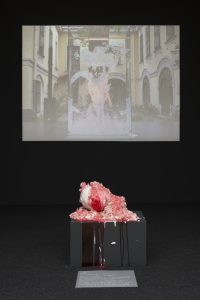
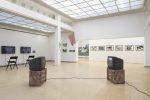
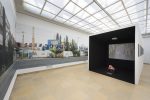
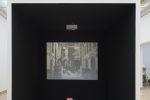
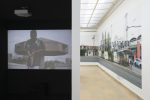
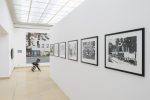
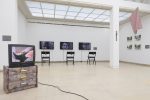
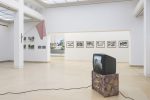
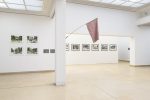
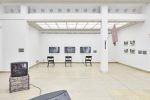
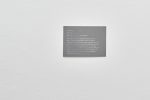
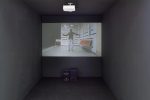

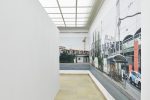
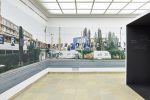
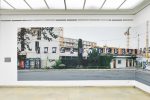

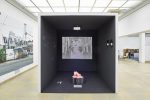
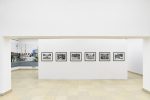


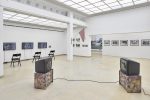
Ingeborg Erhart , Maria Peters